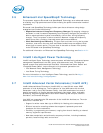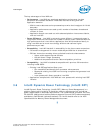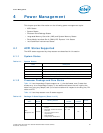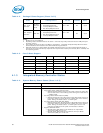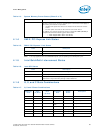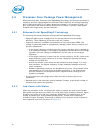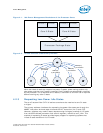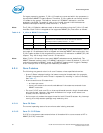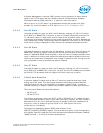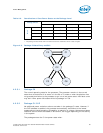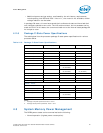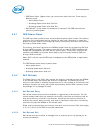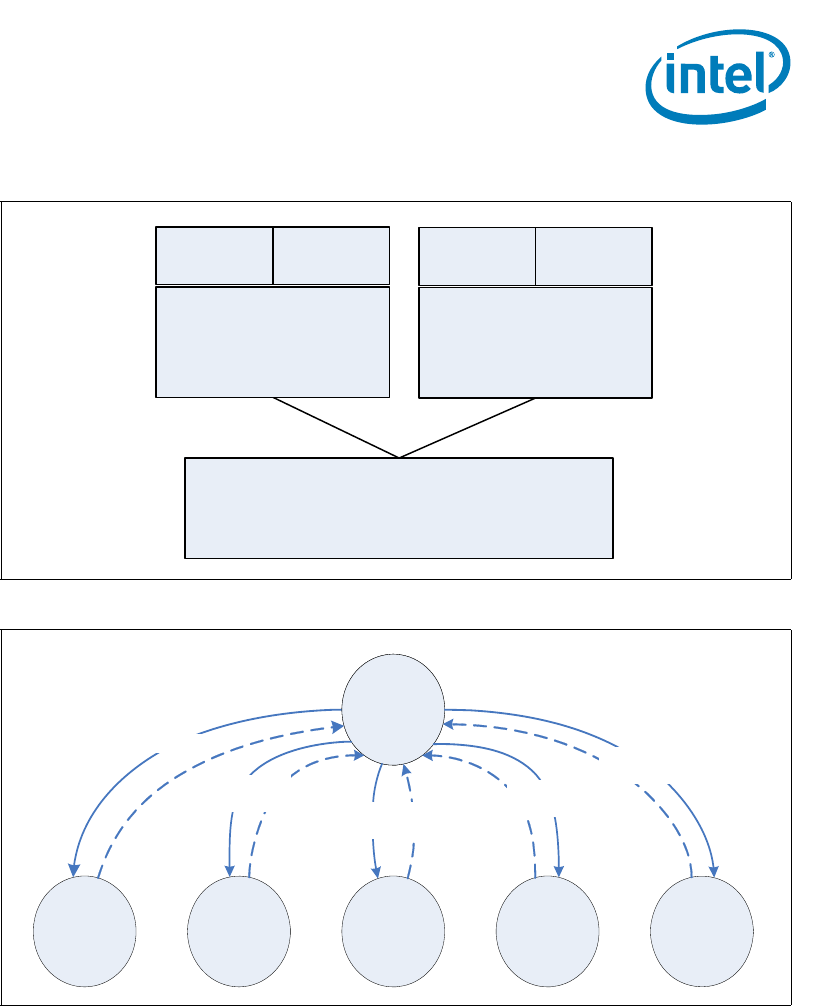
Intel® Xeon® Processor E5-1600/E5-2600/E5-4600 Product Families 91
Datasheet Volume One
Power Management
While individual threads can request low power C-states, power saving actions only
take place once the core C-state is resolved. Core C-states are automatically resolved
by the processor. For thread and core C-states, a transition to and from C0 is required
before entering any other C-state.
4.2.3 Requesting Low-Power Idle States
The core C-state will be C1E if all actives cores have also resolved a core C1 state
or higher.
The primary software interfaces for requesting low power idle states are through the
MWAIT instruction with sub-state hints and the HLT instruction (for C1 and C1E).
However, software may make C-state requests using the legacy method of I/O reads
from the ACPI-defined processor clock control registers, referred to as P_LVLx. This
method of requesting C-states provides legacy support for operating systems that
initiate C-state transitions via I/O reads.
Figure 4-1. Idle Power Management Breakdown of the Processor Cores
Figure 4-2. Thread and Core C-State Entry and Exit
Processor Package State
Core N State
Thread 1Thread 0
Core 0 State
Thread 1Thread 0
C1 C1E C7C6C3
C0
MWAIT(C1), HLT
C0
MWAIT(C7),
P_LVL4 I/O Read
MWAIT(C6),
P_LVL3 I/O Read
MWAIT(C3),
P_LVL2 I/O Read
MWAIT(C1), HLT
(C1E Enabled)




